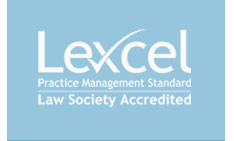- Bromley020 8290 0333
Increasing rent in cases of Assured Tenancy or Assured Shorthold Tenancies
To understand if, and when, a Landlord can increase the rent in cases of assured tenancies and assured shorthold tenancies (ASTs), it is important to be aware of the distinction between the two.
Assured tenancies are much a story of the past as prior to the Housing Act 1996 most tenancies were assured tenancies. This form of tenancy grants greater security of tenure for the tenant as it effectively allows the tenant to reside at the property for the rest of their life. Further, the Housing Act 1988 prescribes that in order for the landlord to evict a tenant, a possession order must be issued by a Judge and will only be granted if there are reasonable grounds. These grounds are enshrined in statute and there are approximately 10 recognised grounds. These include rent arrears or if the landlord wishes to sell the (mortgaged) property.
ASTs were introduced by the Housing Act 1988. The main difference between assured tenancies and ASTs is that the latter is given for a prescribed period of time, typically 6 months. This allows the landlord to evict the tenant, after the initial prescribed tenancy, without a legal reason provided they give notice to the tenant in accordance with section 21 of the Housing Act 1988.
How and when can Landlords increase rent?
For assured tenancies, where a tenant is living at the property on a continued and permanent basis, rent may only be increased in the following instances:
1) Where a rent-review clause is included within the tenancy, this clause will set out the process of how the landlord may go about increasing rent.
2) Where there is no rent-review clause, the landlord may increase rent in the following 3 instances:
- Once the fixed-term expires, the tenancy agreement may be renewed with the new increased rent contained within;
- If the landlord and tenant both sign a document which contains an agreement which details the increase in rent;
- The landlord may use a “Landlords notice: proposing a new rent” form, which would increase the rent following the expiration of the fixed term. This is called a section 13 notice.
Where there is an AST, it is typically unnecessary for the landlord to attempt to increase rent before the end of the fixed-term, due to the nature of the length of ASTs, however, the same provisions apply for ASTs as for assured tenancies.
Are there limits to increasing rent?
Landlords are entitled to charge a full market rent. This can, of course, be challenged by a tenant if they believe that the rent increase goes above and beyond the full market rent. This challenge must be issued within 1 month of receiving the notice. Rent Assessment Committees determine the correct rent for a property based on the availability of properties within an area and the rent being charged for similar properties within the area. When rent increases are challenged, the Rent Assessment Committee (First Tier Tribunals) will assess and fix the correct market value of the rent. These tribunals may, however, propose an increase in rent if they believe that the rent is below market value. As such, these assessments can work for both the landlord and the tenant.
Written by Diana Migo, Housing Management Paralegal









